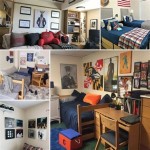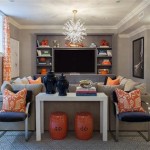Boy and Girl Shared Room Decor
Sharing a bedroom is a common experience for many siblings, particularly when space is limited. Creating a harmonious and functional space for a boy and girl to share requires careful planning and consideration of both their individual needs and shared interests. This article explores various strategies and ideas for decorating a shared bedroom for a boy and girl, focusing on creating a space that caters to both genders while maintaining a cohesive design.
One of the primary considerations when decorating a shared room is establishing distinct zones within the space. This allows each child to have a sense of ownership and personal space. This can be achieved through the strategic placement of furniture, the use of room dividers, or by visually separating the room with color or design elements. For example, placing beds on opposite sides of the room can create a natural division, while a strategically placed bookshelf or curtain can act as a physical barrier, offering a degree of privacy.
Color plays a significant role in setting the mood and tone of a shared room. While traditionally gendered colors like pink and blue can be incorporated, consider exploring a broader palette that appeals to both genders. Neutral colors like beige, gray, or white can serve as a base, allowing for pops of color to be introduced through accessories and textiles. Alternatively, consider using a dual-toned color scheme, with each child choosing a preferred color for their designated zone. This allows for personalization while maintaining a balanced aesthetic.
The selection of furniture is crucial for creating a functional and organized shared room. Bunk beds are a popular choice for maximizing space, particularly in smaller rooms. Loft beds offer another space-saving solution, creating a designated area underneath for a desk, play area, or storage. Consider incorporating individual dressers and bedside tables to provide each child with dedicated storage for their belongings. A shared desk or workspace can also be beneficial, promoting collaboration and providing a designated area for homework and creative activities.
Themes offer an excellent starting point for designing a shared room. Consider themes that appeal to both genders, such as nature, travel, or sports. A nature-themed room might incorporate natural wood furniture, earthy tones, and botanical prints. A travel-themed room could feature maps, globes, and souvenirs from family vacations. A sports-themed room might incorporate team colors, sports equipment, and athletic-inspired decor. The chosen theme can be reflected in the wall decor, bedding, and accessories.
Storage is a critical aspect of any shared room. Maximize vertical space with shelves and wall-mounted organizers. Under-bed storage containers are ideal for storing out-of-season clothing or toys. Consider using labeled bins and baskets to keep items organized and easily accessible. Open shelving can be used to display books, toys, and decorative items, while closed storage solutions help to maintain a clutter-free environment.
Incorporating personalized elements is essential for creating a space that reflects the individual personalities of each child. Allow each child to choose their own bedding, artwork, and decorative accessories. This can be a fun and collaborative process, allowing them to express their individual styles while contributing to the overall design of the room. Personalized wall art, such as framed photos or hand-drawn pictures, can add a unique and sentimental touch.
Lighting plays a vital role in creating a functional and inviting atmosphere. Incorporate a combination of ambient, task, and accent lighting. Overhead lighting provides general illumination, while task lighting, such as desk lamps, is essential for reading and studying. Accent lighting, such as string lights or wall sconces, can add a decorative touch and create a cozy ambiance. Consider installing individual reading lights for each child to allow for independent reading before bedtime.
Textiles, such as rugs, curtains, and bedding, offer an opportunity to add texture, color, and pattern to the room. Choose durable and easy-to-clean fabrics that can withstand the wear and tear of daily use. Rugs can help to define different zones within the room and add warmth and comfort. Curtains provide privacy and control the amount of natural light entering the room. Bedding should be comfortable and reflect the individual preferences of each child.
Regular decluttering and organization are essential for maintaining a harmonious shared room. Encourage children to participate in the cleaning and organizing process, teaching them valuable life skills. Establish designated storage areas for toys, clothes, and other belongings. Regularly purging unused or unwanted items can help to prevent clutter from accumulating and maintain a tidy and organized space.
Creating a successful shared room for a boy and girl involves careful consideration of individual needs, shared interests, and practical considerations like storage and organization. By implementing these strategies and focusing on creating a balanced and personalized space, parents can foster a harmonious and functional environment that both children can enjoy.

Pin Em Quartos

Boy Girl Shared Room Ideas Purewow

Pin On Room Decor

20 Brilliant Ideas For Boy Girl Shared Bedroom Architecture Design

Boy Girl Shared Bedroom Ideas Kids Activities Blog

31 Boy And Girl Shared Small Room Ideas Pottery Barn Teen

21 Brilliant Ideas For Boy And Girl Shared Bedroom

Boy Girl Shared Bedroom The Full Reveal Anika S Diy Life

Boy Girl Shared Room Ideas Purewow

5 Design Tips For Kids Shared Spaces
Related Posts







